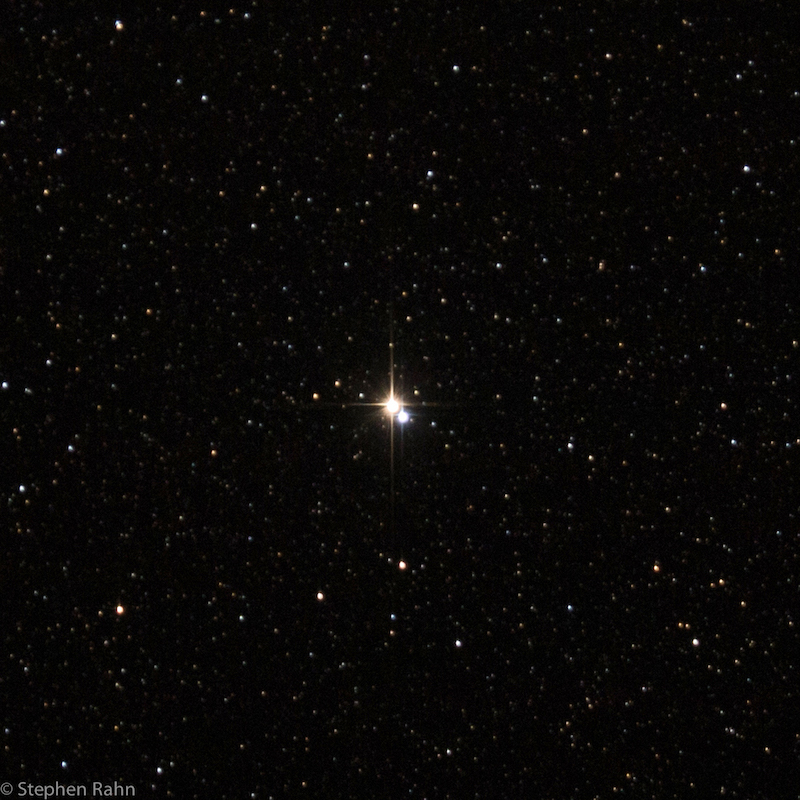This fan-favorite double star at the head of Cygnus the swan shows off stunning contrasting colors through a telescope.
The double star Albireo in Cygnus shows off beautiful contrasting colors of orange and blue, which also reveal the stars’ differing temperatures. Credit: Stephen Rahn
- Albireo, a double star in Cygnus, is easily seen with the naked eye.
- Its two main stars appear gold and blue, though color perception varies.
- The two stars are far apart and take 75,000 years to orbit each other.
- “The two stars in this system are both a few times the mass of the Sun and take about 100 years to orbit each other!” said Jim Kaler.
With the bright Moon lighting the sky our focus is on easy-to-spot targets tonight, such as Albireo at the head of Cygnus the Swan. Also cataloged as Beta (β) Cygni, Albireo is a stunning double star with contrasting colors that is a fan favorite at star parties.
Already flying high in the east after dark, the cross-shaped constellation Cygnus is easy to spot with its brightest star, Deneb, at the tail of the Swan and Albireo at the head in the southwestern corner Cygnus’ domain. About 380 light-years distant and shining with a combined magnitude of 3.1, the two components of Albireo are 34” apart — easy to split with any small scope. The brighter star, also called Beta1, is magnitude 3.4 and glows with a golden hue to most observers’ eyes. Beta2 is a fainter magnitude 5.1 but gives off a blue glow, indicating it is hotter than its brighter companion.
Take some time with this pair and consider which colors you see. While most report the gold-and-blue pairing, some people see the stars as white and blue, or even yellow and green! (Although that green is a trick of the eyes, as there are no green stars.)
Beta1 is a double star as well, but these components are too close to split in a telescope. The two stars in this system are both a few times the mass of the Sun and take about 100 years to orbit each other, according to the stellar expert Jim Kaler. By contrast, the visible components of Beta1 and Beta2 take 75,000 years to orbit each other!
Sunrise: 5:38 A.M.
Sunset: 8:31 P.M.
Moonrise: 5:19 P.M.
Moonset: 1:54 A.M.
Moon Phase: Waxing gibbous (84%)
*Times for sunrise, sunset, moonrise, and moonset are given in local time from 40° N 90° W. The Moon’s illumination is given at 12 P.M. local time from the same location.
For a look ahead at more upcoming sky events, check out our full Sky This Week column.
